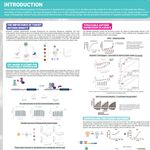Department of Medicine and the Division of Hematology-Oncology - University of North Carolina
BIOGRAPHY

Wednesday, October 13th, 2:00 PM EDT
The Patient with Venous Thrombosis - Practical Points for the Laboratorian and the Clinician
Special World Thrombosis Day webinar
Presented at:
Stago EdVantage Virtual University
Sponsored by: Diagnostica Stago, Inc.
C.E. Credits:
P.A.C.E. CE
Speaker
Abstract
_498529b5d4a8a133a9ad0c87b9de109d.png)
Diagnosis of deep vein thrombosis and pulmonary embolism, collectively referred to as venous thromboembolism (VTE), identification of VTE risk factors, and best anticoagulation treatment can be straightforward. However, a number of pitfalls in diagnosis and management exist that may lead to misinterpretation of radiological studies and laboratory results, resulting in inappropriate or suboptimal patient treatment. This presentation will highlight 22 clinically relevant teaching points what to consider when taking a patient’s history, performing a medical examination, interpreting radiological and laboratory studies, and making decisions on length of anticoagulation therapy in the patient presenting with symptoms of VTE or having an established diagnosis of VTE.
Learning Objectives
- Understand how DVT and PE are diagnosed and what the pitfalls of diagnosis are
- Understand the Wells score pretest probability assessment and when it is appropriate to use a D-dimer when diagnosing DVT and PE
- Explain what the ‘warfarin hate factor’ and the ‘direct oral anticoagulant hate factor’ are and how they are clinically used
- Discuss the principle of the ‘VTE recurrence triangle’s and how various VTE risk factors influence length of anticoagulation treatment decision making
- Discuss caveats about thrombophilia test results and how acute thrombosis and being on an anticoagulant can lead to false-negative and false-positive thrombophilia test results
- Explain how use of the D-dimer and of thrombophilia results can be used clinically to determine how long a patient with VTE should be treated with anticoagulation
You May Also Like
DEC 10, 2024 | 9:00 AM
To-date, proteomic analysis has been severely limited in scale and resolution. Analyzing protein samples using an intact, single-molecule approach holds th...
APR 21, 2025 | 1:00 PM
C.E. CREDITS
Routine coagulation assays are widely performed in laboratories and provide valuable information to the patient’s overall clinical picture. It’s important for laboratorians to kn...
Speaker:
Malissa S Norfolk, MBA, PMP, MLS(ASCP)ᶜᵐSHᶜᵐ
FEB 25, 2025 | 1:00 PM
C.E. CREDITS
Quality efforts in the clinical laboratory are always under the microscope- a hyper-focus for laboratorians from start to finish. Recognizing the external factors that affect hemostasis test...
Speaker:
Rae Kerlin, BS, MLS (ASCP), NCA
OCT 02, 2024 | 7:30 AM
De novo gene synthesis and protein expression are established technologies that can give access to nearly any target DNA or protein sequence, allowing for engineering of biologics. In this p...
Speaker:
Claudia Chiocchini
Presented at: Cancer Research & Oncology Virtual Event Series 2024
Sponsored By: Thermo Fisher Scientific
Sponsored By: Thermo Fisher Scientific
MAR 19, 2025 | 11:30 AM
Join this year's poster presenters in the Poster Hall during the Poster Networking Hour, Wednesday, March 5th, from 10:00 –11:00 AM PDT , to chat...
Loading Comments...
Please update your information
Certificate of Attendance
Thank you for choosing Labroots. Please note that a Certificate of Attendance does NOT count towards Continuing Education Credits.
DOWNLOAD CERTIFICATE
DOWNLOAD CERTIFICATE
You must watch the entire webinar to receive your certificate of attendance.
You must attend the event before receiving your certificate of attendance.
You must register for the event first.
Certificate is no longer available for this event.
You must be logged in to retrieve your certificate.





